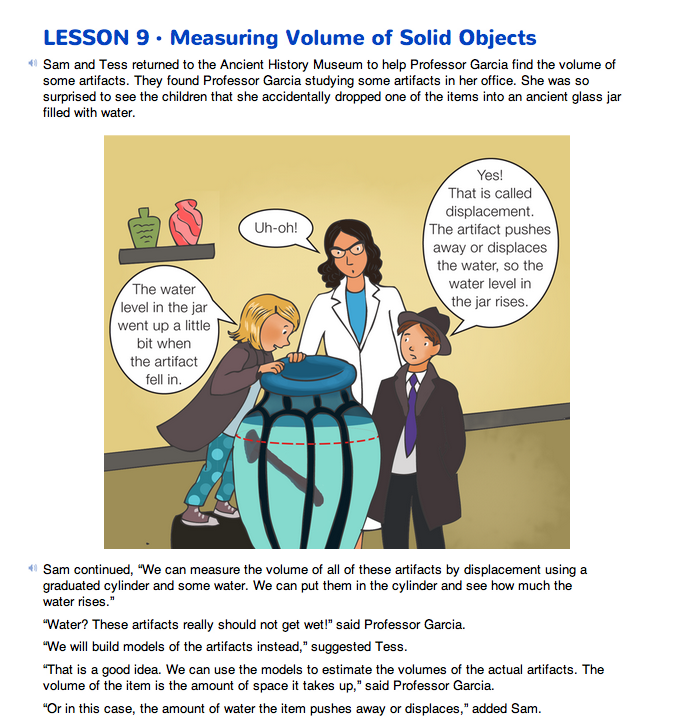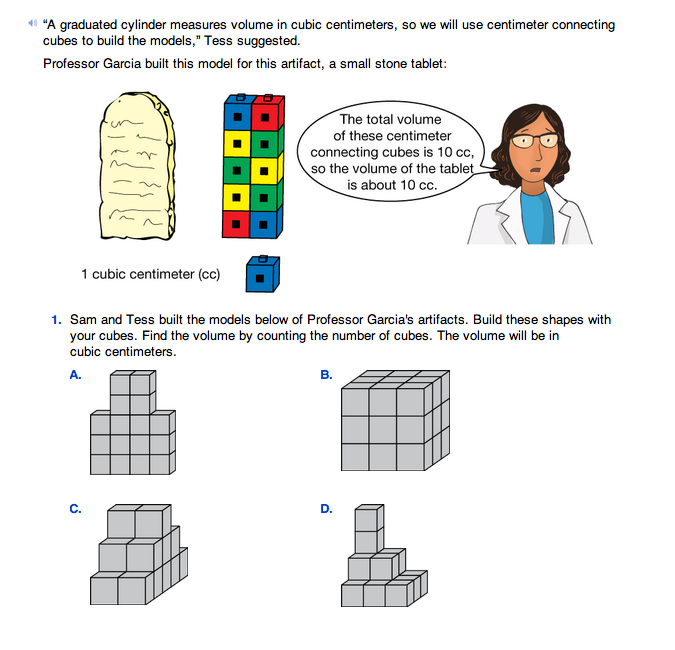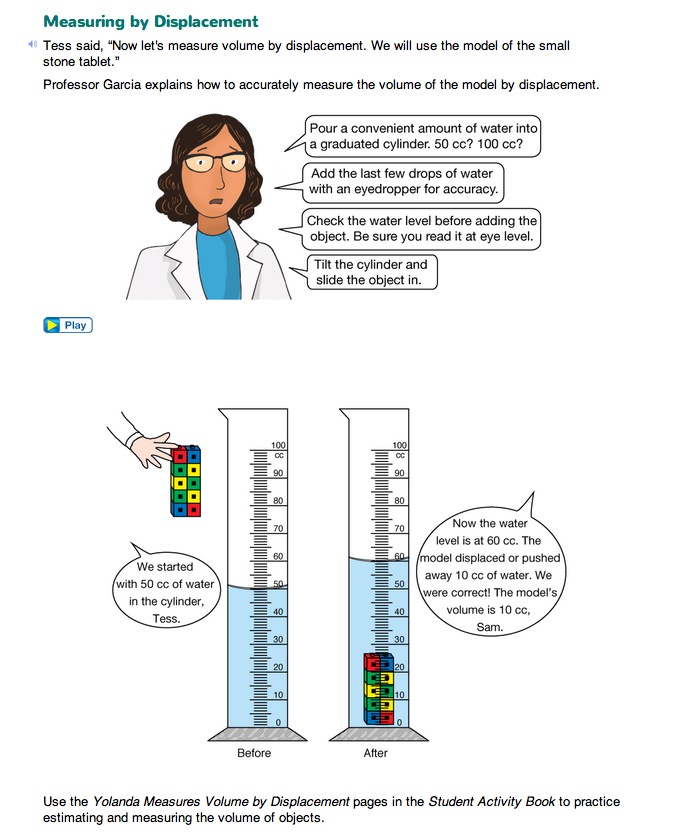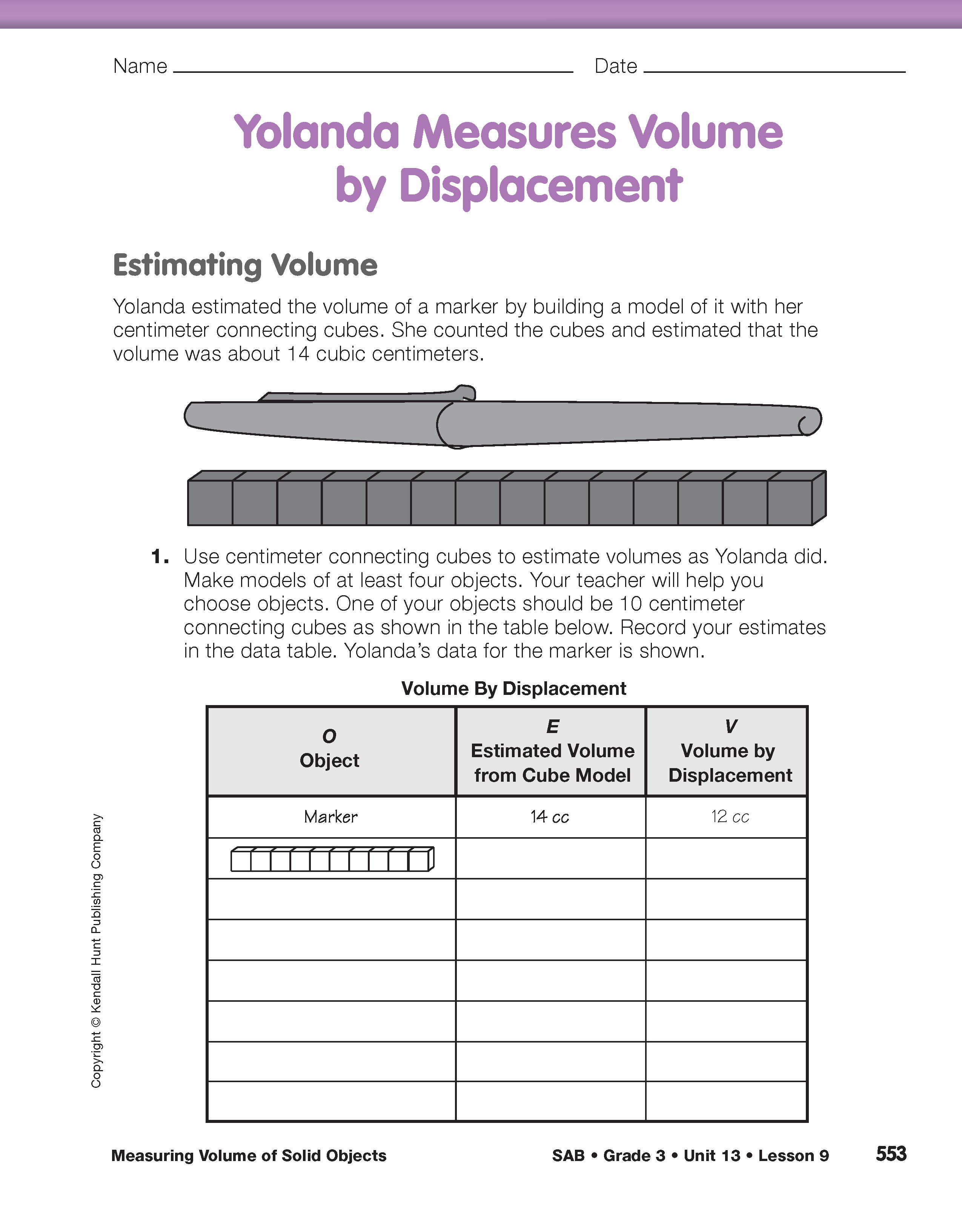Measuring Volume of Solid Objects
Est. Class Sessions: 2–3Developing the Lesson
Part 1. Estimating the Volume of Solid Objects
Count Centimeter Connecting Cubes. Demonstrate building a shape or cube model with centimeter connecting cubes. Display the cube model for students to view.
Ask:
Find the volume of the cube model by counting the number of cubes. Take it apart if necessary. Encourage students to build cube models and find the volumes.
Direct students' attention to the Measuring Volume of Solid Objects pages in the Student Guide. Read the vignette aloud together. The characters from the “Elixir of Youth” story, Tess and Sam, have returned to the Ancient History Museum. A startled Professor Garcia accidentally drops an artifact into a jar of water. Tess notices that the water level in the jar is higher with the object in it, and Sam introduces the concept of displacement.
After reading the vignette, but before assigning Question 1, ask:
Build Models to Estimate Volume. Assign Question 1 on the Measuring Volume of Solid Objects pages in the Student Guide to provide practice with finding the volumes of cube models. Students first build the models and then count the number of cubes. See Content Note.
After students have completed the question, ask:
Next show students the collection of small objects you gathered.
Ask:
Estimate Volume with Models. Direct students' attention to the Measuring by Displacement section of the Measuring Volume of Solid Objects pages in the Student Guide. Read the vignette as a class to introduce how to measure the volume of objects using a graduated cylinder and the displacement method.
After the introduction, have students find the Yolanda Measures Volume by Displacement pages in the Student Activity Book. In the Estimating Volume section, read the short vignette with students to find out how Yolanda estimated the volume of a marker. She used centimeter connecting cubes to make a model about the same size as the marker. She found the volume of the model simply by counting the number of cubes.
Distribute two handfuls of centimeter connecting cubes to student groups. Have the small objects you gathered available, or have students choose items from the classroom or their desks that will fit inside the graduated cylinders. Assign Question 1. Students estimate the volume of several objects by making models as Yolanda did and recording the volume of the models in the Volume by Displacement data table. They should choose at least four objects, including a shape they build from 10 centimeter connecting cubes. There are three columns in the data table. Students should fill in just the first two columns and leave the third blank. This column will be used in Part 2 of this lesson. Students will need to use the same set of small objects for the next part of the lesson.
Assign the Measuring Volume of Solid Objects Homework pages in the Student Guide at this time. The work on these pages will prepare students for the second part of Yolanda Measures Volume by Displacement.

















